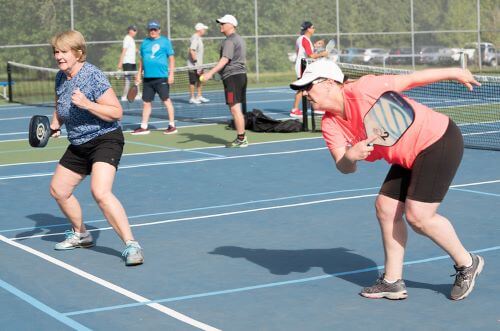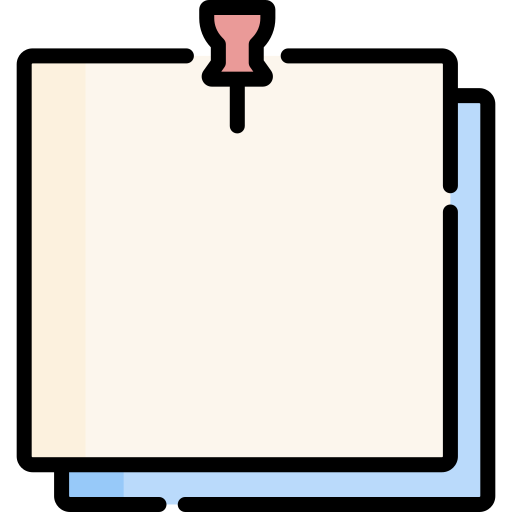
Curious about what is stacking in pickleball?
With pickleball gaining popularity, the game is getting more competitive as both a casual and professional sport. And regardless of whether you play it casually or professionally, nothing is more satisfying than outmaneuvering your opponent in a game.
Stacking is a pickleball technique that helps you gain the upper hand in a match. It’s regularly used in doubles play, and when done right, it lets you play to your strengths and capitalize on your opponent’s weaknesses.
If you want to learn more about this technique, this article is for you. In this guide, we have answered the fundamentals of what is stacking in pickleball, the situations when you should use it, and how to make winning strategies with stacking.
What Is Stacking in Pickleball?
Traditional stacking is when both players on a team line up or stack behind one another on the same side of the court while serving or returning a serve. However, stacking also refers to your second teammate positioning themselves strategically outside their side of the court to play to your strengths.

It is a move that utilizes both offensive and defensive tactics in the pickleball rules. Mostly used in doubles plays and works with court positioning strategies in the game, it entails changing your court location with your teammates so that you are on your stronger side. For example, if you have a stronger forehand, while your teammate has a stronger backhand but a weaker forehand, then you can switch positions to play to your strengths.

With the stacking pickleball strategy, you can cover more ground, which also improves your shot power and accuracy. Additionally, it helps you create more angles on the attack and put your opponents on the defensive. Because you’ll have more court coverage defensively, it will make it harder for your rivals to hit winners.
Now, let’s dive into how stacking in pickleball gives you the upper hand.
Rules of Stacking
Scoring a point can be challenging, especially since pickleball rules demand that the server and the receiver for a round have to stay on their respective sides before the serve goes out. However, no rule restricts the second teammate from standing anywhere on the court. This comes in handy during stacking.

Here are a few more rules of stacking you need to keep in mind:
- One player must make the serve. The server must serve the ball to the player positioned diagonally to him on the opposite court.
- The player standing diagonally opposite the server must connect on the serve return.
- When serving the ball, the server is not permitted to have any foot on or inside the line.
- Before the ball is returned on the third shot, it must bounce.
After abiding by these rules, you and your teammate will be free to position yourselves anywhere on the court and continue the game.
Types of Stacking
Before you understand the types of stacking, it’s essential to understand conventional positioning according to pickleball rules. The starting positions for players on each team consist of a player on the ad side and a player on the deuce side. When they score, the serving team switches roles, while the members of the returning squad remain on their respective sides.

Stacking on the Serve
The first type of stacking is stacking on the serve. Here’s how to do it:
- Decide who serves first: Typically, a coin toss or mutual agreement between the players will decide this.
- If your team is serving first, the player on the right-hand side of the court will be serving. Pick the player who is stronger on that side to be the server. After the rotation, if you are both on your weaker side, you should stand behind the one who is serving.
- Execute the serve: The serving player may begin the service as usual once you are both in position. The serving player should move to their respective side of the court once the service is taken.
- Play on: You can carry on with the game after finishing the serve. Remember to discuss who will take which shots with your partner and to remain conscious of your court placement.
Stacking on the Return
Another way to stack in pickleball is stacking on the return. This technique is all about positioning yourself and your partner in the best possible way to receive the service.
- Determine which player will receive the serve: Before the serve, you and your partner need to decide who will receive the serve. This player should position himself on the receiving side of the court diagonal to the service, with their partner either behind them or outside the court.
- Step forward: The player receiving the service should move forward as soon as the service is underway. They may position themselves and prepare to strike the return.
- The player who just received the serve should immediately shift to their partner’s side of the court when the return is struck. In doing so, they can stack and provide more substantial shooting angles for the following shot.
- Keep communicating with your teammate: It’s critical to talk to your partner at every stage of the procedure. Make sure you are both on the same page and let them know when you are moving to the side of the court.
Remember that player communication is vital for stacking on the return. By practicing more, you can strengthen partner compatibility over time.

Switching and Stacking
For the switch stacking, both players switch simultaneously. For example, the server serves from the left side of the court and quickly switches to the right side while their teammate switches their position at the same time. The main target of the switch stack is to confuse the opposing team about your court positioning. They will not know where you are going to end up.

Important Stacking Hand Signs to Keep in Mind
Hand signs are a great way to communicate with your partner when you’re trying to stack in pickleball. Here are a few standard hand signals used for stacking:
- Fist up: This is a signal for the player who will receive the serve to move forward towards the middle of the court.
- Open hand-up: This signal is used by the player who is going to stay back and become the stack partner. The open hand signals that they will be waiting for their partner to move to the side of the court.
- Pointing: Once the serve is returned, the player who just hit the shot can use a pointing gesture to indicate which side of the court they want their partner to move to.
- Thumbs up: A thumbs up signals that you’re ready for your partner to move to the side of the court and stack with you.
By utilizing hand signs, you don’t have to say your strategies out loud. As a result, you can keep your opponents guessing about your next move, which puts them at a serious disadvantage.
Stacking Checklist
If you’re ready to start implementing your stacking strategies, here are a few things you need to double-check before implementing the strategies in the game:

- Stay alert: Be aware of your opponent’s movements and adjust your positioning accordingly.
- Scan for gaps: Always keep scanning for gaps in your opponent’s court. Once you notice a gap, you can implement a stacking technique to hit a shot in the gap to win a point.
- Look for patterns: The chances are high that your opponents will also have a few stacking strategies up their sleeves. Look for patterns by analyzing their gameplay and finding stacking strategies they are comfortable using. Then, counter with your own winning strategy.
- Play to your teammate’s strengths: Winning a pickleball doubles play is a team effort. You need to be aware of your teammate’s court positioning and try to cover any gaps. Ensure that you are both filling in for each other without hampering each other’s game style.
Conclusion
Pickleball is a game of endurance and wit. You can outplay your opponents through great teamwork and by utilizing handy strategies like stacking. Stacking is a strategic element in the doubles game that allows you and your teammate to play to your strengths and cover each other’s weaknesses.
We hope this guide answered your queries about what is stacking in pickleball and how to use it effectively in matches.